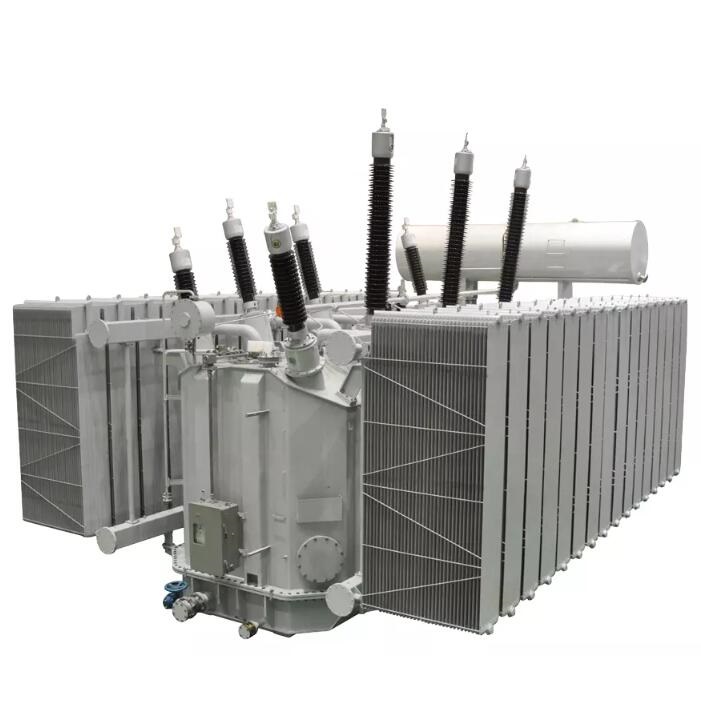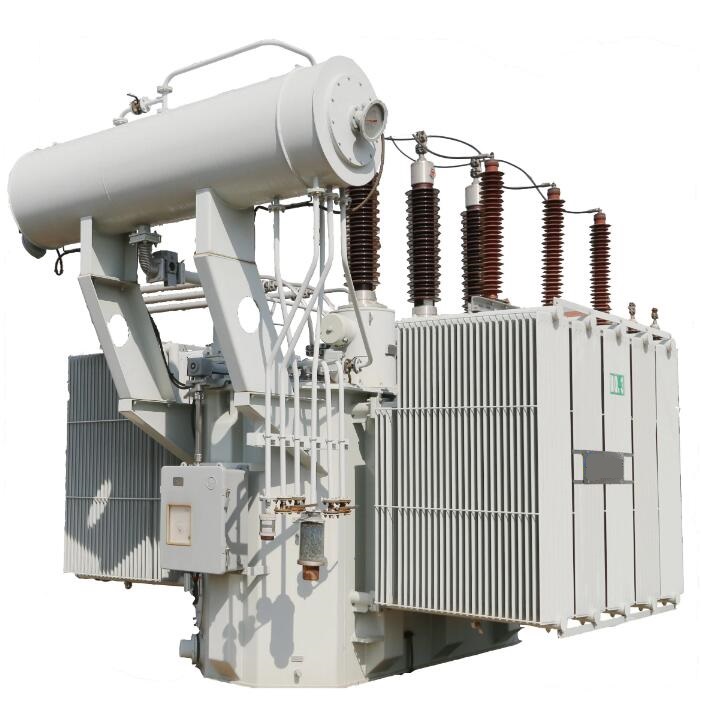UHV can greatly enhance the transmission capacity of my country's power grid. According to the data provided by the State Grid Corporation of China, the UHV DC power grid of the primary circuit can transmit 6 million kilowatts of electricity, which is equivalent to 5 to 6 times that of the existing 500 kV DC power grid, and the power transmission distance is also 2 to 3 times that of the latter. Therefore, the efficiency is greatly improved. In addition, according to the calculations of the State Grid Corporation of China, if the power transmission of the same power is carried out, the use of UHV lines can save 60% of land resources compared with the use of 500 kV high-voltage lines.
Transformers are important equipment in power plants and substations. They have an important impact on the quality of power supply and the stability of power system operation. Ultra-high voltage transformers are expensive and have heavy operational responsibilities. Therefore, it is extremely important to strengthen the research on their fault handling.
The transformer is the heart of the power system. It is very important to maintain and overhaul the transformer to ensure the stable operation of the power system. Nowadays, my country's power system is constantly developing in the direction of ultra-high voltage and large capacity. The coverage and capacity of the power supply network are gradually increasing, making transformers gradually develop in the direction of ultra-high voltage and large capacity. However, the higher the level of the transformer, the greater the probability of failure, and the greater the harm caused by the transformer operation failure. Therefore, the failure analysis, maintenance and repair of ultra-high transformers and daily management are important for promoting the stability and safety of the power system. Ascension is important.
Analysis of Common Fault Causes The causes of
ultra-high voltage transformer faults are often complicated. To accurately diagnose transformer faults, it is necessary to first understand the common fault causes of transformers:
1. Line interference
Line interference, also known as line inrush current, is the most common cause of transformer faults. It is caused by closing overvoltage, voltage peak, line fault, flashover and other abnormalities in transmission and distribution.
2. Insulation aging
According to statistics, insulation aging is the second cause of transformer failure. Insulation aging will greatly shorten the service life of transformers and cause transformer failures. Data show that insulation aging will reduce the service life of transformers with a service life of 35 to 40 years. average shortened to 20 years.
3. Overload
Overload refers to the long-term operation of the transformer with the power exceeding the nameplate. This situation often occurs in power plants and power consumption departments. As the overload operation time increases, the insulation temperature will gradually increase, which accelerates the insulation performance. The aging of the components, the aging of the insulating part, and the reduction of strength are easy to be damaged by external impacts, resulting in transformer failure.
4. Improper installation. Improper
selection of protection equipment and irregular safety operation will cause hidden dangers of transformer failure. Generally speaking, transformer failures caused by improper selection of lightning protection equipment, improper installation of protective relays and circuit breakers are more common.
5. Improper
maintenance There are not a few ultra-high transformer failures caused by improper daily maintenance. For example, improper maintenance causes the transformer to be damp; submersible oil pump maintenance is not timely, causing copper powder to be mixed into the transformer and sucking air in the negative pressure area; wrong wiring; loose connections and heat generation ; The tap changer is not in place, etc.
6. Poor manufacturing
Although ultra-high transformer faults caused by poor process quality are only a small number, the faults caused by this reason are often more serious and more harmful. For example, loose wire ends, loose pads, poor welding, low short-circuit resistance, etc., are generally caused by design defects or poor manufacturing.
Fault determination and treatment
1. Fault conditions A
transformer has a rated voltage of (345±8)×1.25kV/121kV/35kV, a rated capacity of 240MVA/240MVA/72MVA, and the main transformer has been in stable operation in the past. One day, a routine oil chromatographic analysis of the main transformer was carried out, and it was found that the acetylene content in the insulating oil of the main transformer body was 2.3 μl/l, so samples were taken twice in the afternoon and evening of the same day to confirm that the acetylene content of the transformer body oil in this phase had increased too much. It quickly indicated that there was a discharge phenomenon inside the transformer, so the main transformer was shut down around the early morning of the next day.
2. On-site treatment
In order to determine the nature of the transformer fault and the discharge location, the following analysis was carried out:
1) Pulse current method, through the pulse current test, it was found that with the increase of the test voltage and the increase of the test time, the partial discharge power of the transformer increased significantly . The discharge initiation voltage and extinguishment voltage gradually decrease as the test progresses;
2) Partial discharge spectrum measurement. By analyzing the obtained waveform diagram, it can be determined that the discharge part of the transformer is inside the winding;
3) Ultrasonic positioning of partial discharge. Through several partial discharge ultrasonic localization tests, the sensor collected individual weak and extremely unstable ultrasonic signals when the voltage was high, which proved once again that the discharge location should be located inside the winding;
4) Oil chromatography test. After the partial discharge test, the volume fraction of acetylene rose to 231.44×10-6, indicating that there was a strong arc discharge inside the transformer during the partial discharge test.
3. Failure cause analysis
According to the on-site analysis, it is believed that the reasons for the discharge failure are as follows:
1) Insulating cardboard. The processing of insulating cardboard has a certain degree of dispersion, so the insulating cardboard has certain quality defects, and the electric field distribution is changed during use;
2) The insulation margin of the electrostatic screen of the voltage regulating coil is insufficient. If the radius of curvature is too small, the voltage equalization effect is not ideal, which will cause discharge breakdown at this position;
3) The daily maintenance is not thorough. Equipment damp, sponge and other debris is also one of the reasons for the discharge failure.
The repair of the transformer
took the following maintenance measures in order to eliminate the discharge fault:
1) The damaged and aging insulation parts were replaced, and the breakdown point of the low-voltage coil and the voltage regulating coil was repaired, thereby improving the insulation strength there. Avoid breakdown caused by discharge. At the same time, considering that the main insulation is also damaged to a certain extent during the breakdown process, all the main insulation between the low-voltage coil and the voltage regulating coil has been replaced;
2) Remove the equipotential cable ties of the electrostatic screen. Open, remove the protruding water chestnut, increase the radius of curvature of the corner and wrap the insulation, so as to reduce the field strength;
3) According to the process requirements of 330kV transformer, the body of the transformer has been thoroughly vacuum-immersed in oil and dried without phase. A partial discharge test must also be carried out, and it can be charged and operated only after passing the test. In addition, in order to avoid the recurrence of discharge faults, the daily maintenance and management of transformers should be strengthened, and oil chromatography tests should be carried out frequently to detect faults in time and grasp their specific conditions. When faults are found, various technical means should be used to judge the fault location situation and take corrective measures in a timely manner.
To sum up, the fault causes of ultra-high voltage transformers are relatively complex, and various technical means should be used for fault judgment during on-site treatment, and the fault causes should be analyzed in detail. However, it is worth noting that ultra-high voltage transformers are expensive and difficult to maintain. In order to avoid failures, daily maintenance and management should be done well to reduce the probability of failures.

Post time: Nov-26-2022

